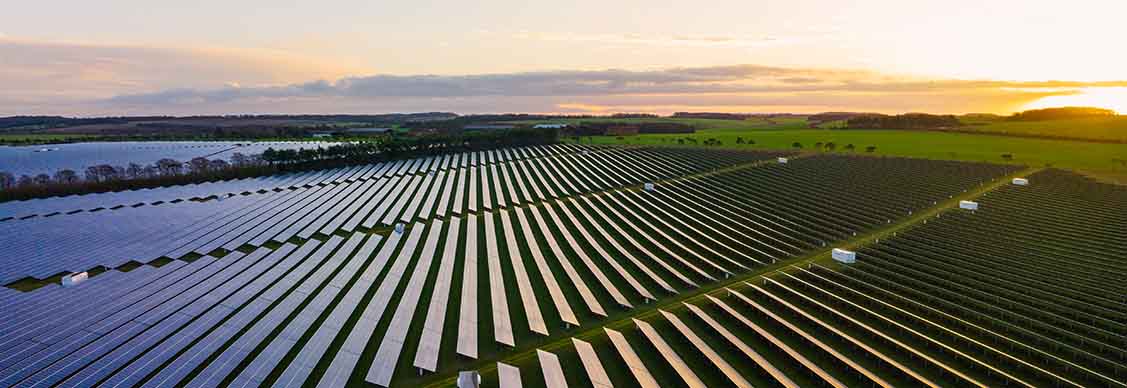How solar projects are tackling power market challenges
Focus increases on revenue management
Testing conditions in many European power markets are leading developers of larger solar projects to explore new ways of generating more revenue and better managing existing operations.
High volatility in Europe’s wholesale power markets and low, or even negative power prices as more renewable energy comes onto the grid, are impacting revenues of large-scale projects.
Germany registered 78 hours of negative power prices in May, while Spain recorded a 13.76 €/MWh average wholesale power price in April, an historic low.
For assets with higher capex costs, as well as those in areas with lower irradiation, the recent drop in average power prices is creating financial challenges for developers and asset owners, explains Marcus Peech, Senior Director, Energy and Infrastructure Advisory at JLL.
“Projects considered viable in a high-power price environment are now feeling the effects, meaning more marginal returns and lower developer margins.”
Seasonality, particularly in Europe, remains an issue, while the so-called cannibalization effect – high levels of photovoltaic output in midday hours, which can depress wholesale prices – is having a varying impact.
Looking for more insights? Never miss an update.
The latest news, insights and opportunities from global commercial real estate markets straight to your inbox.
“The effects of this are definitely more acute in southern Europe and in countries where there is high deployment of PV,” explains Peech. “The UK, for now, has felt this less, given lower irradiation and less rooftop deployment.”
Most operational PV assets in the UK are either supported by government-backed mechanisms, or have long-term power purchase agreements (PPAs), helping to alleviate the impact of cannibalization, Peech adds.
Curtailment events, when grid operators request certain plants to stop producing power due to congestion issues, have become more common in recent years, explains Tomás García, Senior Director for Energy and Infrastructure Advisory in Spain at JLL.
“This issue, alongside cannibalization, is likely to become more important,” he says. “The current situation in Spain is, we feel, an example of what may lay in store for the rest of Europe.”
Custom Not Found
Cannot serve request on this server.
Looking for ways to increase revenues
For solar asset holders, revenue reduction affects the profitability of the asset and, in severe cases, their ability to repay any debt facilities. But industry players, especially owners of operating solar assets, are now exploring solutions to manage revenue.
“There’s certainly more focus on how best to define and put revenue management strategies in place,” García says.
Some are looking at technical solutions, such as hybridizing solar plants with other technologies – from wind to battery energy storage systems (BESS) or synchronous condensers.
“This will allow plant operators to better decide when and how to sell their power,” García explains.
At the same time, market solutions are available – instead of selling electricity to wholesale power markets, solar plants can secure long-term predictable revenues via PPAs with either power-traders or corporate buyers, and/or government-supported tender programs, like the UK’s Contracts for Difference (CfD) auction mechanisms.
Some solar plants in Spain are starting to participate in selected ancillary services, such as frequency regulation and replacement reserve. This can achieve up to 35% higher revenues, according to recent data by Aurora Energy Research.
“Proactive revenue management is receiving more attention from both asset owners and their power market representatives. We can expect to see more of this in the coming years,” says García.
Optimising design
Design optimisation of solar assets is another area in focus amid compressed revenues.
“We’re seeing greater use of higher efficiency bifacial panels and more solar panel row spacing, resulting in less shadowing, as well as the addition of trackers. These are all solutions I’d expect more players to turn to, particularly in those regions of low irradiation,” Peech says.
“The market may also move more towards DC coupling on co-location assets, compared to currently more prevalent AC coupling."
Some issues, however, may prove harder to solve. For example, asset owners face a dilemma to secure project financing and build the asset to schedule.
“They may need to lock in longer term PPA pricing but at the bottom of the market,” Peech says. “Alternatively, those that can, may decide to delay construction and hold out for power market pricing to improve.
“Either way, this will certainly drive increased appetite for upcoming government CfD auctions which provide revenue certainty if secured.”
While current market conditions are testing, the solar sector continues to innovate and adapt amid growing demand for renewable energy.
“We fully expect investors to continue to commit to solar as the long-term outlook remains strong. It's a highly agile and nimble sector – which makes reacting and dealing with change easier,” concludes García.
Contact Marcus Peech
Senior Director, Energy and Infrastructure Advisory at JLLWhat’s your investment ambition?
Uncover opportunities and capital sources all over the world and discover how we can help you achieve your investment goals.
